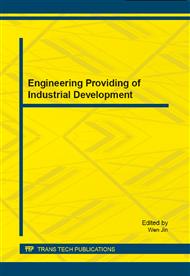p.142
p.148
p.153
p.159
p.169
p.176
p.183
p.190
p.196
Influence Analysis of Fluid-Solid Coupling to Sensor of Microwave Resonant Cavity System for Wetness Measurement
Abstract:
The microwave resonant cavity is the sensor of wetness measurement in medium perturbation method. Local eddy current and viscous dissipation of stream will cause the temperature difference of cavity, which led to the shift of resonant frequency affecting the stability of sensor. This paper calculates the temperature distribution of cavity under conditions that varieties of steam parameters and velocity of flow by flow-solid coupling method. The thermal deformation of different conditions of cavity is calculated. The influence of thermal deformation to the resonance frequency of resonant cavity is analyzed, according to the average value of node deformation of the cavity effective surface. The results show that the average temperature of cavity and thermal deformation increase with the steam parameter increase and the offset value of resonance frequency increases. The wetness measurement scheme of wet steam on the turbine exhaust needs to improve to reduce the effect of cavity body deformation.
Info:
Periodical:
Pages:
169-175
Citation:
Online since:
September 2014
Authors:
Price:
Сopyright:
© 2014 Trans Tech Publications Ltd. All Rights Reserved
Share:
Citation:


